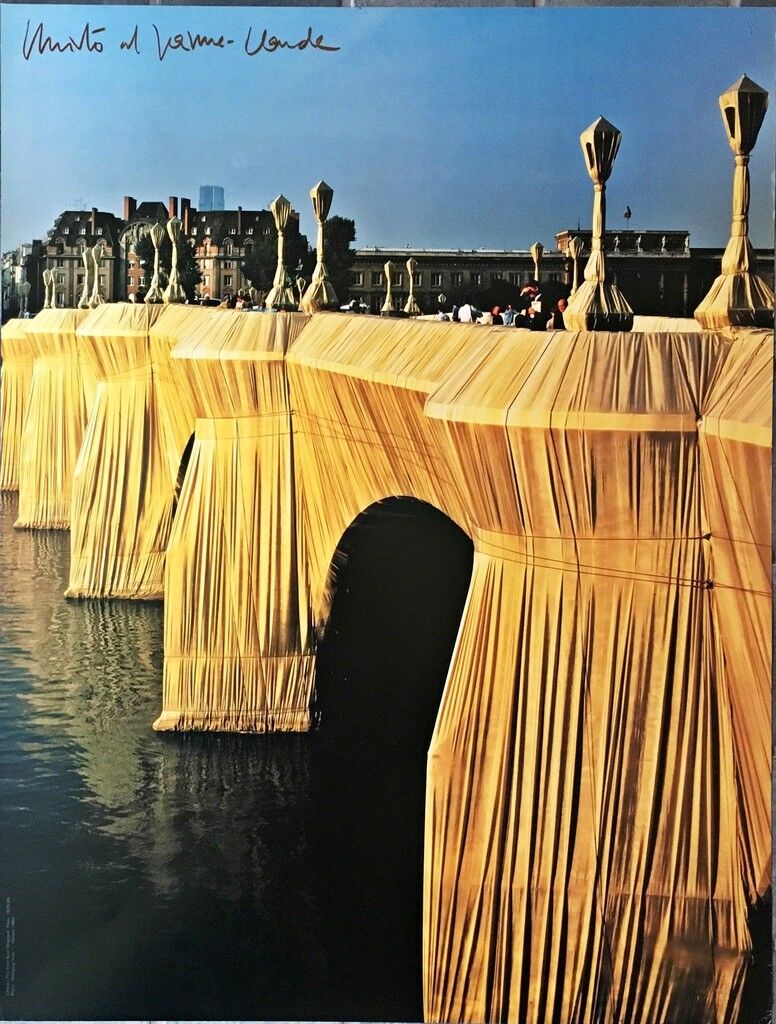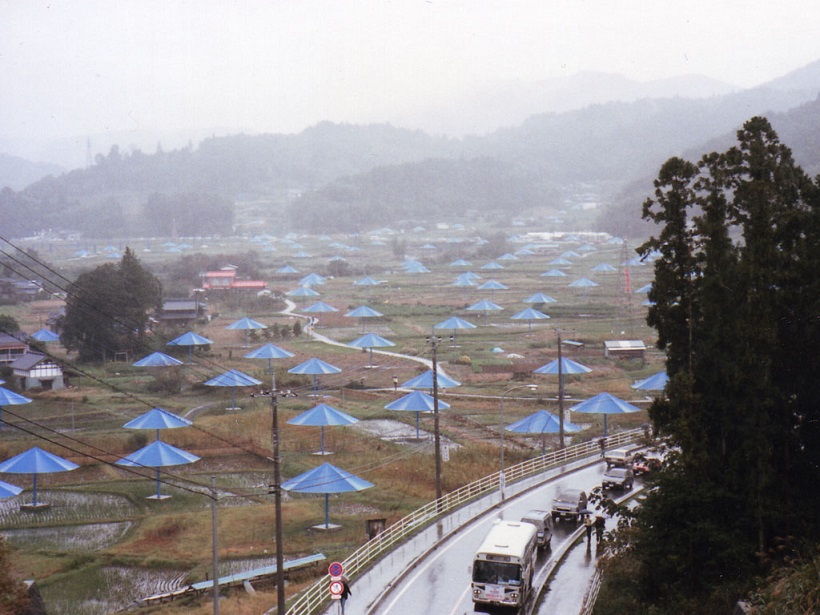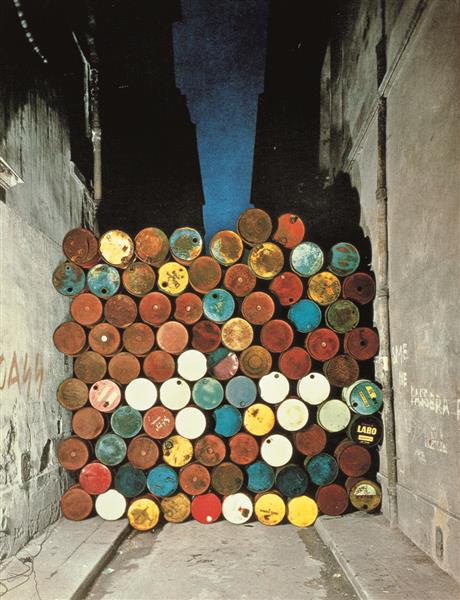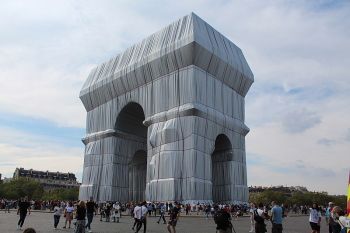Almost a month ago, people around the world were surprised by Christo and Jeanne-Claude’s environmental artwork that wrapped The Arc de Triomphe in 25,000 square meters of recyclable polypropylene fabric in silvery blue, and 3,000 meters of red rope. This work is a realization of Christo’s wishes to complete L’Arc de Triomphe, Wrapped after his death.
L’Arc de Triomphe, Wrapped is one of their monumentally-scaled sculptures and environment intervention arts. Previously, they have made several works that use draping or wrapping technique on large landscapes, buildings, and industrial objects, such as The Pont Neuf Wrapped (1975-85), Wrapped Reichstag (1971-95), The Umbrellas (1988), and Surrounded Islands (1980-83).
In 1985, Christo and Jeanne-Claude succeed to wrap The Pont Neuf, a bridge in Paris that spanning the Seine River. Christo wrapped the entire structure in plastic fabric made an amazing aesthetic architectural object. Their artwork allowed viewers to perceive The Pont Neuf with a new perspective in its beauty, simplicity, energetic, and volumetric qualities.

Christo and Jeanne-Claude, Christo, Javacheff Christo, The Pont Neuf Wrapped (Hand Signed), ca. 1985, Alpha 137 Gallery https://www.artsy.net/
The Umbrellas (1988) is a joint project between the USA and Japan in which the artists planned to install giant umbrellas at equal distances over more than ten miles in two similar landscapes–in Southern California and Japan’s Ibaraki Prefecture. Pale blue umbrellas in Japan and rubber-duck yellow in the US. The artists have altered umbrellas that are usually considered industrial objects into art objects.

Christo and Jeanne-Claude, 1991 Umbrella Project(Japan). Photo taken by Dddeco. https://commons.wikimedia.org/wiki/File:Umbrella_Project1991_10_27.jpg
In the 1980s, the two artists working together planned to encircle eleven manmade islands in Biscayne Bay, Florida with 6.5 million square feet of bright pink floating polypropylene fabric. This artwork is called Surrounded Islands. Their work defies the boundaries between the real and the fantasy, between the formal gallery and environment, and also between art objects and the natural world.
In 1994, Christo and Jeanne-Claude got an opportunity to create their ambitious project, Wrapped Reichstag. Reichstag is the lower house of Germany’s parliament. In this artwork, the building was draped with 100,000 square meters of silver fabrics and blue rope. The wrapping of the Reichstag symbolizes unified Germany and marked the rebirth of Berlin as a world city. This work emphasizes the intertwined of art, politics, and social issue.

Christo and Jeanne-Claude, Reichstag Mappe II (6), 1995. https://www.artsy.net/
Christo and Jeanne-Claude met in 1958 when he was commissioned to paint a portrait of her mother, Précilda de Guillebon. Christo together with his wife and fellow artist, Jeanne-Claude created their first outdoor project in 1962. They began to assemble 89 oil drums in a narrow street in Paris’s Latin Quarter. Wall of Oil Barrels was a response to the West’s dependency on oil that led to politics, economics, and environmental issues.

Christo and Jeanne-Claude, Wall of Oil Barrels – The Iron Curtain (Paris), 1962. https://www.wikiart.org/
Both artists have always been interested in the space that people use to live whether in an urban or rural area. As Christo states, “We’ve always said that it was wonderful to lend us the spaces that belonged to others.”
The collaboration of Christo and Jeanne-Claude marked the greatest achievements in early site-specific art. Their artworks open a new appreciation of architectural or natural sites, especially in their dynamic and volumetric forms. The artists also show the way arts deal with many issues, like environmental-crisis, industrialization, bureaucratization, and late capitalism.

Early Photo of Christo and Jeanne-Claude. Film Still from Christo and Jeanne-Claude, Directed by Michael Blackwood, © 2019 Michael Blackwood Productions.


